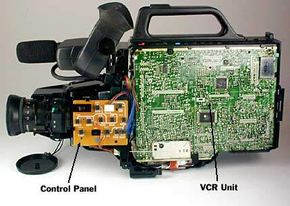The Basics
A typical analog camcorder contains two basic parts:
- A camera section, consisting of a CCD, lens and motors to handle the zoom, focus and aperture
- A VCR section, in which a typical TV VCR is shrunk down to fit in a much smaller space.
The camera component's function is to receive visual information and interpret it as an electronic video signal. The VCR component is exactly like the VCR connected to your television: It receives an electronic video signal and records it on video tape as magnetic patterns (see How VCRs Work for details).
Advertisement
These two sections are easily seen in the following photos.
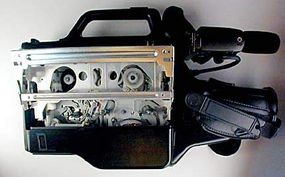
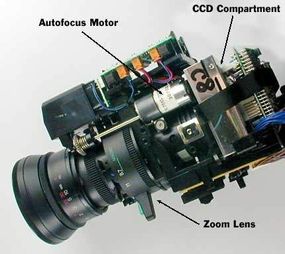
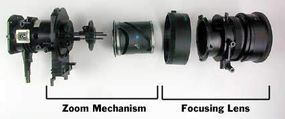
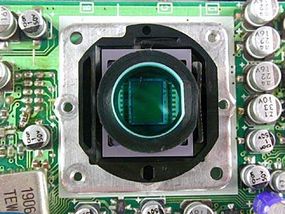
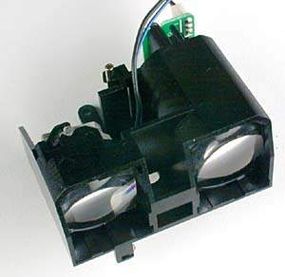

A third component, the viewfinder, receives the video image as well, so you can see what you're shooting. Viewfinders are actually small, black-and-white or color televisions, but many modern camcorders also have larger full-color LCD screens. There are many formats for analog camcorders, and many extra features, but this is the basic design of most all of them. The main variable is what kind of storage tape they use.
Digital camcorders have all these same elements, but have an added component that takes the analog information the camera gathers and translates it to bytes of data. Instead of storing the video signal as a continuous track of magnetic patterns, it records the picture and sound as 1s and 0s. Digital camcorders are so popular because you can copy 1s and 0s very easily without losing any of the information you've recorded. Analog information, on the other hand, "fades" with each copy -- the copying process doesn't reproduce the original signal exactly. Video information in digital form can also be loaded onto computers, where you can edit it, copy it, e-mail it and manipulate it.
In the next section, we'll look at the heart of the camcorder, the semiconductor device that converts visual information into an electronic signal.
